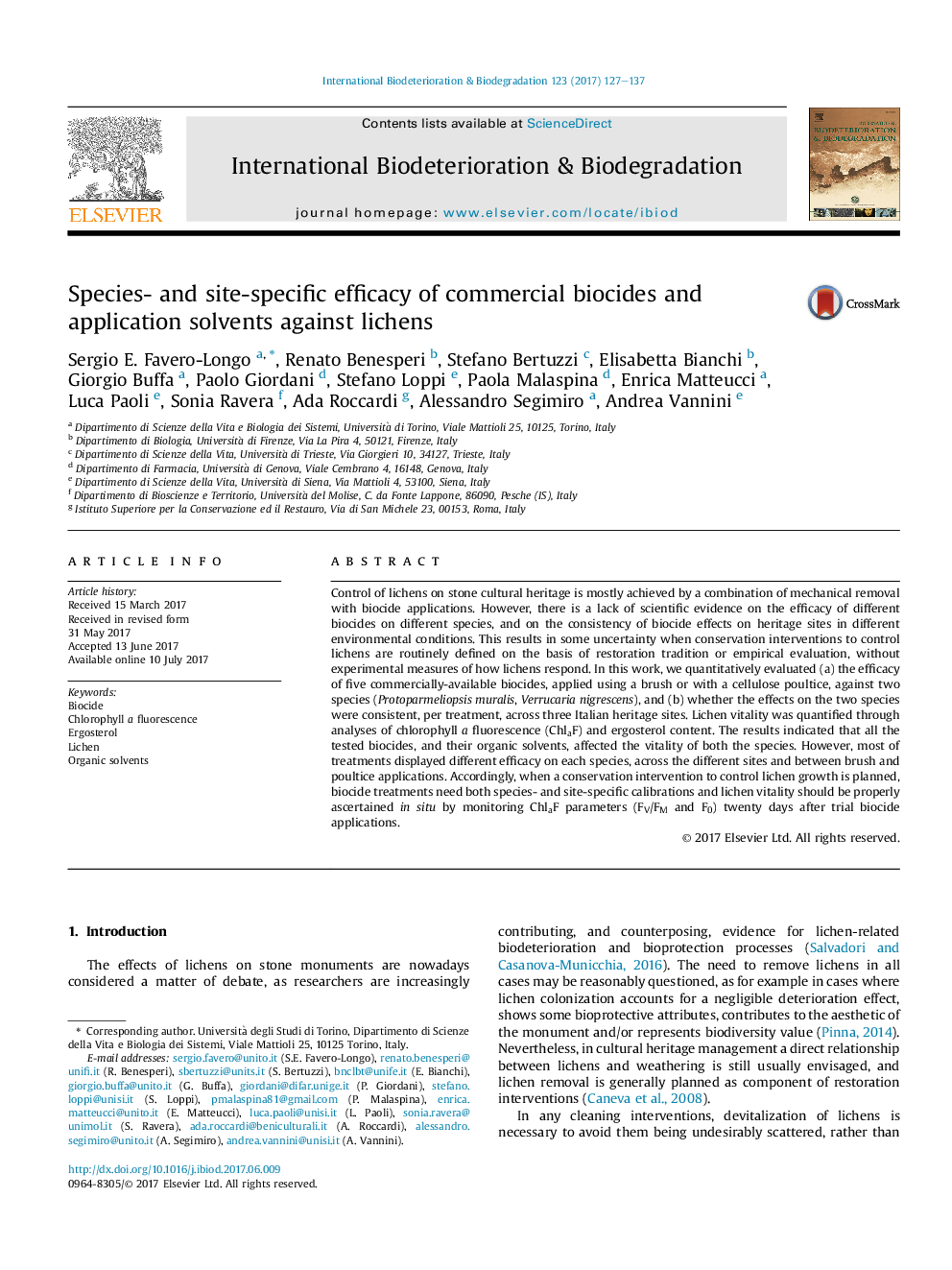| کد مقاله | کد نشریه | سال انتشار | مقاله انگلیسی | نسخه تمام متن |
|---|---|---|---|---|
| 5740260 | 1616294 | 2017 | 11 صفحه PDF | دانلود رایگان |
- A species-specific and site-dependent biocide efficacy is quantified.
- Poultice applications affect lichens more severely than brush applications.
- Organic solvents used to apply biocides significantly devitalize lichens.
- ChlaF measures (Fv/FM, F0) highlight specific patterns of residual vitality in thalli.
- Conservative interventions need ad-hoc calibrations of biocide treatments on lichens.
Control of lichens on stone cultural heritage is mostly achieved by a combination of mechanical removal with biocide applications. However, there is a lack of scientific evidence on the efficacy of different biocides on different species, and on the consistency of biocide effects on heritage sites in different environmental conditions. This results in some uncertainty when conservation interventions to control lichens are routinely defined on the basis of restoration tradition or empirical evaluation, without experimental measures of how lichens respond. In this work, we quantitatively evaluated (a) the efficacy of five commercially-available biocides, applied using a brush or with a cellulose poultice, against two species (Protoparmeliopsis muralis, Verrucaria nigrescens), and (b) whether the effects on the two species were consistent, per treatment, across three Italian heritage sites. Lichen vitality was quantified through analyses of chlorophyll a fluorescence (ChlaF) and ergosterol content. The results indicated that all the tested biocides, and their organic solvents, affected the vitality of both the species. However, most of treatments displayed different efficacy on each species, across the different sites and between brush and poultice applications. Accordingly, when a conservation intervention to control lichen growth is planned, biocide treatments need both species- and site-specific calibrations and lichen vitality should be properly ascertained in situ by monitoring ChlaF parameters (FV/FM and F0) twenty days after trial biocide applications.
Journal: International Biodeterioration & Biodegradation - Volume 123, September 2017, Pages 127-137
